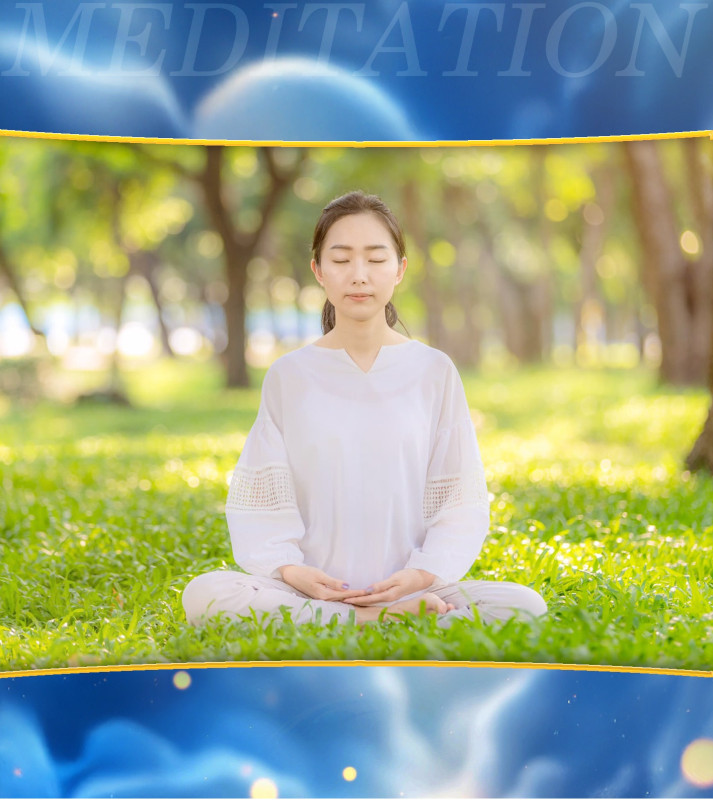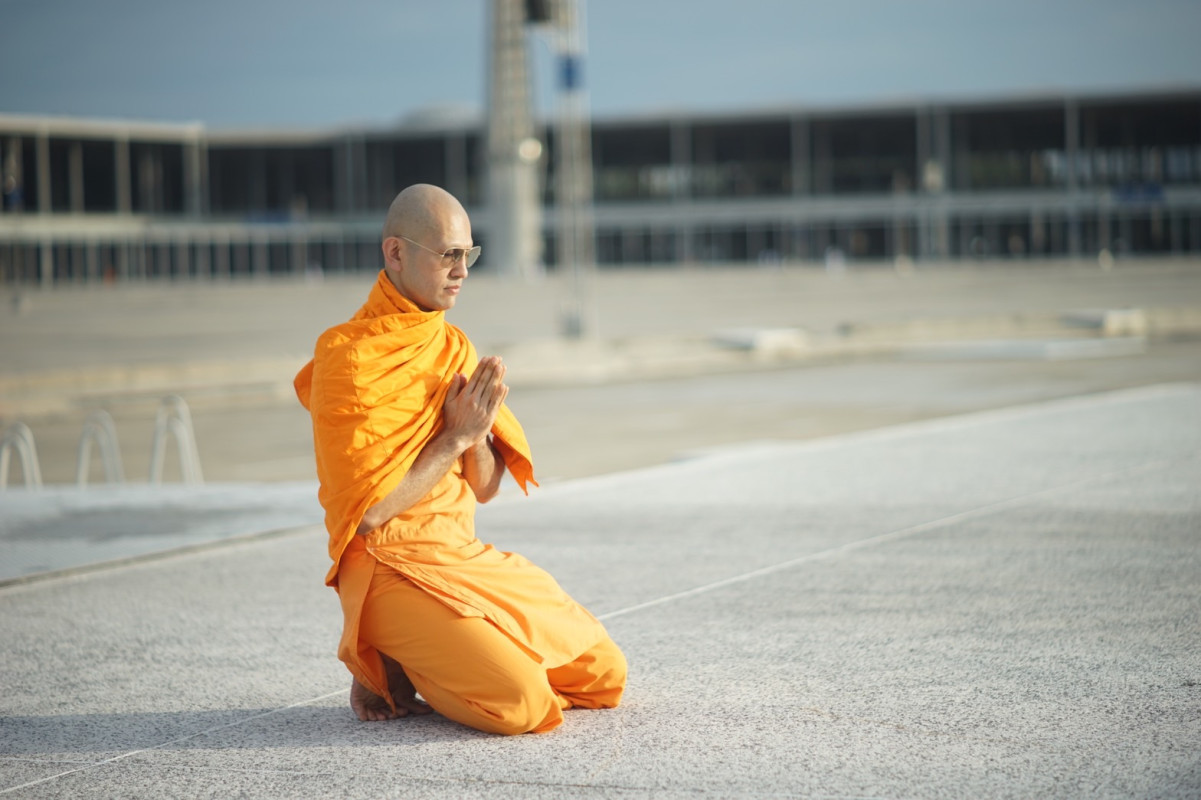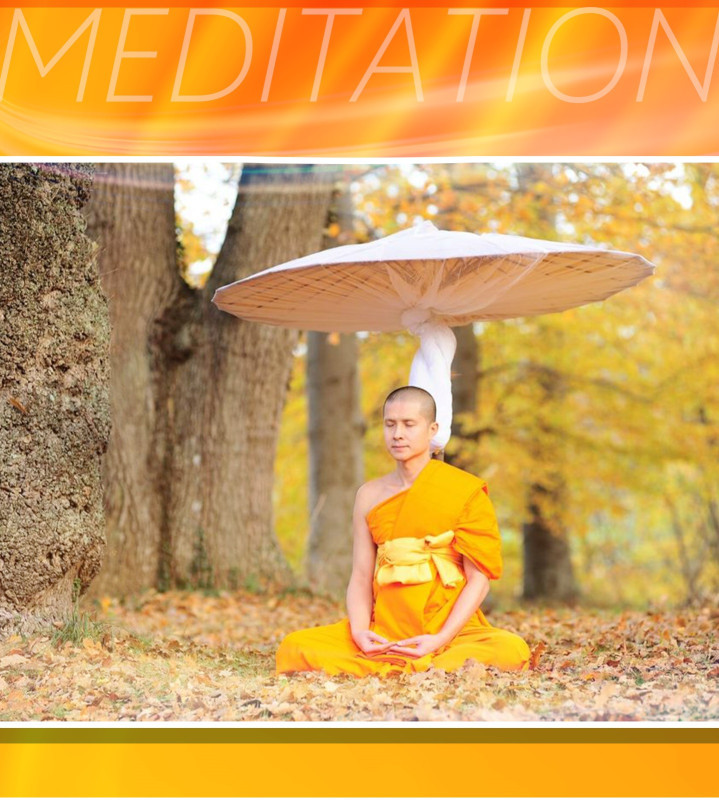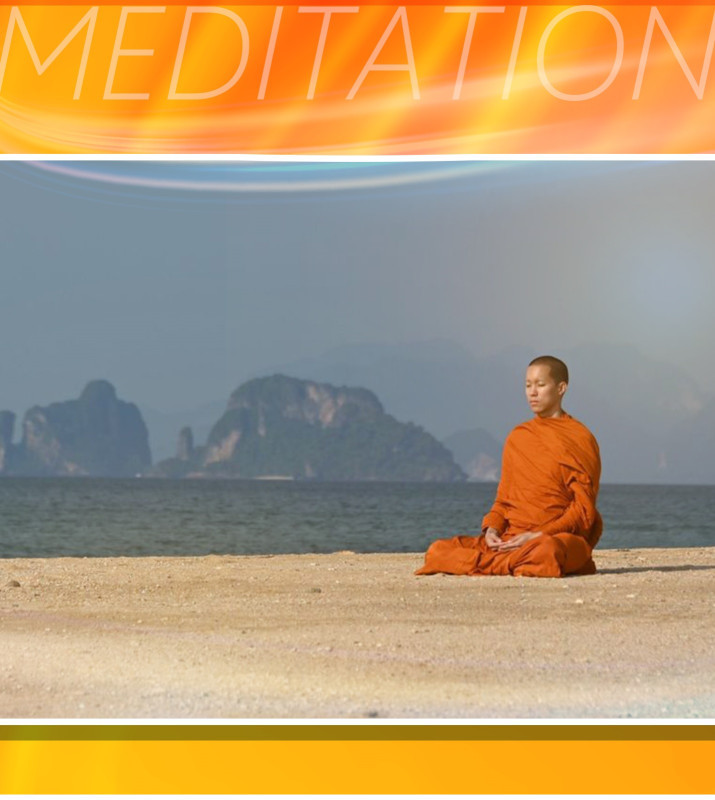Samādhi
Sitting Meditation
Meditation Practice for Realizing the Dhammakāya
The practice of meditation to realize the Dhammakāya is a direct application of the Middle Way—by gently training the mind to become still and centered within the body,specifically at the seventh base, the center of the body(two finger-widths above the navel, deep within).This practice involves bringing the mind inward, away from scattered thoughts and emotions,toward a single, unified focus, maintained in a state of ease and relaxation.As the mind becomes more settled,
it naturally withdraws from external distractions and begins to rest calmly within.Eventually, when the mind becomes still in the correct way,a clear, bright inner sphere—known as the Sphere of the Initial Path (Paṭhamamagga)or the Dhamma Sphere—will appear.From there, deeper inner bodies are gradually revealed in stages,leading ultimately to the direct realization of the Dhammakāya,the inner body of enlightenment—pure, radiant, and unshakable.
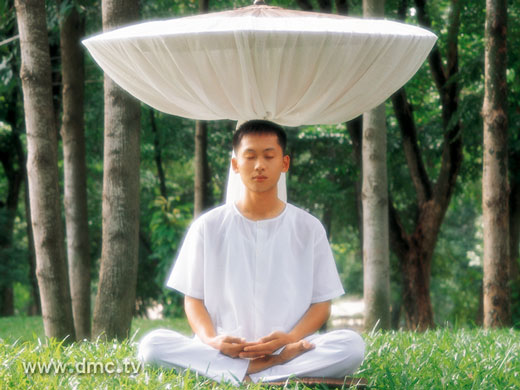
Sitting Meditation and Dhamma Practice
The Rediscovery of the Meditation Method for Realizing the Inner Dhammakāya This method of meditative concentration (samādhi) for realizing the Dhammakāya withinis a profound practice rooted in the original teachings of the Buddha.It had remained hidden and forgotten for nearly 2,000 years,until it was rediscovered through deep meditation on the full moon day of the 15th waxing night in the 10th lunar month,in the year B.E. 2460 (1917 CE).It was Phra Mongkolthepmuni (Sodh Candasaro)—a highly revered monk later known as Luang Pu Wat Paknam Bhasicharoen—who attained this profound realization during meditation.Out of compassion, he dedicated his life to sharing this knowledge with the public.Since then, countless practitioners have followed his method,
and many have experienced the realization of the Dhammakāya through this path of inner stillness and purity.
How to Practice Meditation
-------------------------
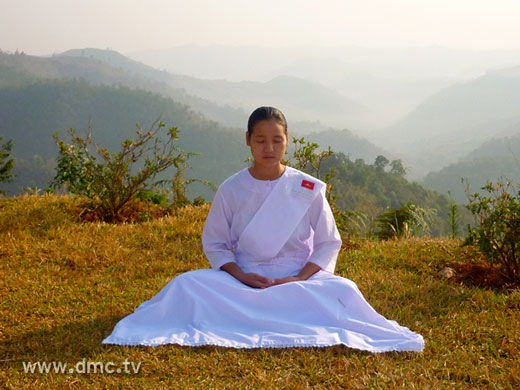
Meditation Is Universal
Begin by Sitting Comfortably Sit cross-legged, placing your right leg over the left.If this posture is uncomfortable, you may sit on a chair instead.Then, place your right index finger gently on top of your left thumb,resting your hands in your lap.Close your eyes gently—just enough for the eyelashes to lightly touch.Do not squeeze your eyelids, and do not press your eyeballs.Begin to relax every part of your body,starting from the top of the head, slowly down through the face, neck, shoulders,arms, chest, abdomen, legs—all the way to the tips of the toes.Let everything relax completely.Sit with a gentle smile.Let the mind feel fresh, clean, joyful, and free from all worries.Let go of all attachments—whether to people, animals, or possessions.Let the heart be free.Then, gently lower your mind inward,
like a feather softly floating down to touch the surface of still water—so lightly that it does not cause even the slightest ripple.Let the mind come to rest—still and gentle—at the center of the body,which lies two finger-widths above the navel, deep inside the abdomen.This is called the seventh base, the point of inner stillness.
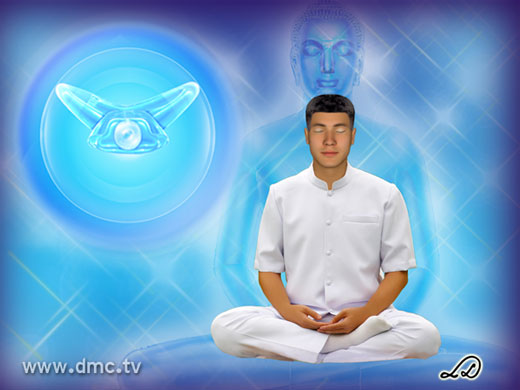
Then, gently visualize a clear, radiant sphere,like a crystal ball, or a bright, luminous image of the Buddha.Visualize it naturally and effortlessly—just as you would imagine something familiar and pleasant.Let the mind be cool, calm, and at ease,as if you're simply daydreaming playfully, with joy and relaxation.There’s no need to force or try too hard.Just keep the image light and continuous,to gently draw the mind away from restlessness and distraction,and bring it to a place of inner clarity and stillness.
If the mind is still wandering or restless,gently repeat the mantra in your heart:“Samma Arahang… Samma Arahang…”Let the sound seem to arise from the center of your abdomen—from the center of the body itself.Continue repeating the mantra smoothly and without interruption,until the mind begins to settle.When the mind becomes still and no longer feels the need to repeat the words,
you may stop the chanting and simply rest your awareness in silent stillness.
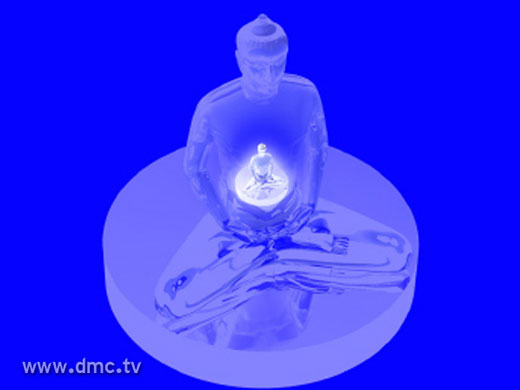
Dhammakāya
Maintaining Awareness After Meditation Even after finishing your formal sitting meditation,you should continue to recollect the clear sphere or the radiant image of the Buddhaas often as possible—throughout all daily activities and postures:Sitting, standing, walking, lying down While using the restroom, washing your face, brushing your teethBathing, eating, dressing, driving Just recall the image naturally, without force—but recall it often, so the mind becomes familiar and gently anchored at the seventh base—the center of the body. Before long, the mind will come to rest perfectly still and effortlessly,and a pure, radiant inner sphere will arise— accompanied by a profound inner happiness unlike anything you’ve ever known.
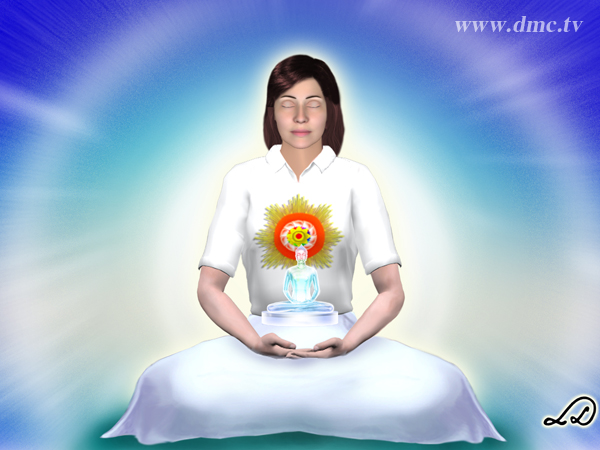
Sitting Meditation and Dhamma Practice
With Continued Practice, Clarity Will Deepen As you continue to practice regularly and diligently,the radiant inner sphere will appear more clearly and steadily at the center of your abdomen—even with your eyes open or closed—as if it has become a natural part of your being.Eventually, you will be able to see and maintain awareness of this inner light in all postures and throughout your daily activities.
The Fruits of Meditation The results of consistent meditation practice are profound: It will lead your life along the path of true happiness,success, and mindful living, free from carelessness.Your meditation will become increasingly refined and deep,until you reach the Dhammakāya within—the inner body of enlightenment.The merit accumulated through meditation in this lifetime will greatly support your realization of Dhamma in future lives,allowing you to progress quickly on the path to liberation.In addition, you will become a person of sharp wisdom,clear insight, and deep understanding.
---------------------------
 English
English
 ภาษาไทย
ภาษาไทย

